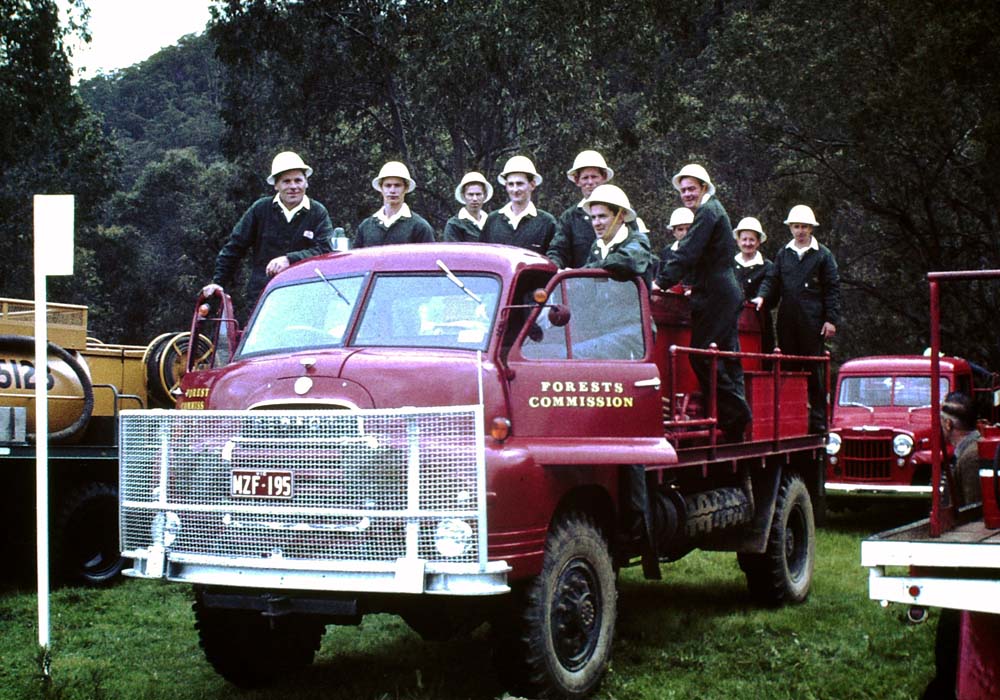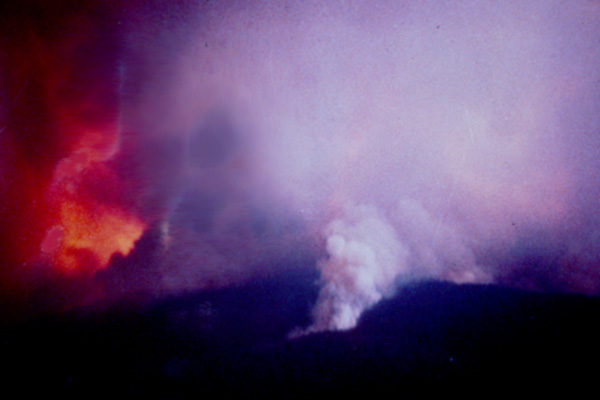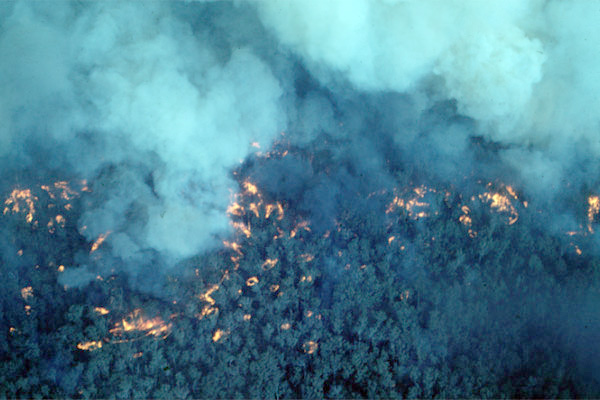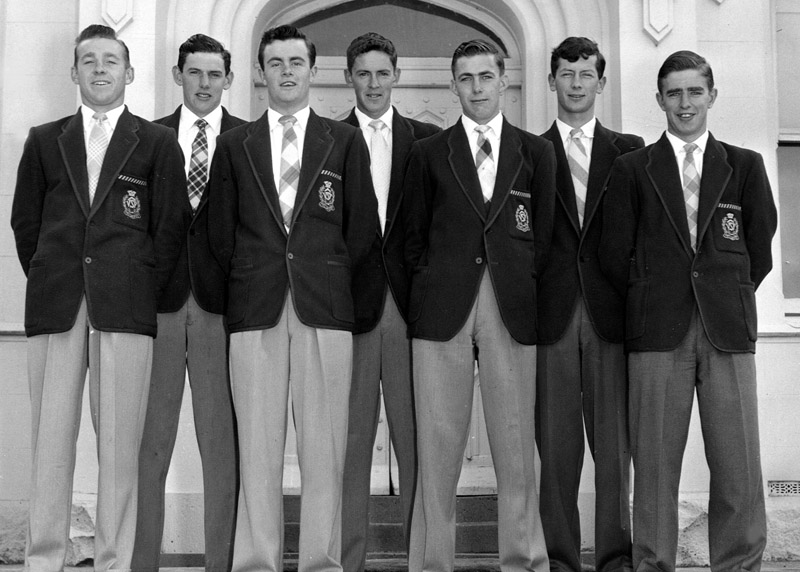Bob Graham
Eye in the Sky
This article is based on conversations between Bob Graham and Richard Rawson during 2022. Any text in quotation marks is paraphrased from the recordings of our conversations. The rest is commentary.
Bob came to the VSF from Briagolong in 1955 and graduated in 1957. His first posting was Assessment but he quickly found himself in the Heywood Forest District, where he acknowledges the valuable experience he gained from working with Forest Overseers Tim Hodgetts, Dick Aldridge and his brother, H (Stringy) Aldridge. From Heywood he spent time at The Triangle (Matlock) in the Neerim Forest District, before moving to the Ovens Valley in the early 1960s and working in both the Bright and Myrtleford Districts. He then worked in Noojee before becoming the District Forester at Swifts Creek in September 1974. He was still in Swifts Creek when Conservation, Forests and Lands was formed, but moved to Ballarat as the Assistant Regional Manager, Public Land in about 1985. After more organisational change he became the Senior Forester for the Midlands FMA (centred on the Wombat Forest). Bob retired in 1999 but continued working for a time as a trainer in forest fire managment.
Bring Me Some Water
Fire on Feathertop
Mid to late 1960s
"A bloke who wanted to do some gold mining decided he would get into an old gold mine on the east Ovens, but to do that he had to get rid of the blackberries covering the entrance. So he lit a fire and then left, because he expected someone would turn up. But the tower on Mt Hotham was not manned that day and no one from our side did turn up. So he went back the next day and the sun was out and the wind was blowing and it went whistling up the side of Mt Feathertop."
"This time we did see it and when we arrived we started off down the bottom raking our way up, but it took off and reached the top. After we reached the top and sheltered on the safe side of the mountain it was decided by Bright office that we should come down, rest for the night and go back up the next day. However, walking down and then back up the steep slopes the next day was not considered by us to be a great option. There was no way known we were going back done just to walk back up in the morning. We decided to camp out for the night. We had food but little to no water by this stage."
"So Bright hired a local aircraft, got some one gallon plastic containers, filled them with water and dropped them. Well they stripped branches out of trees, were a danger to life and limb and, of course, blew apart and became little pieces of orange confetti spread over the landscape. Bright tried once more. In the Bright camping ground there was an ice machine and they got half blocks of ice and put them in hessian bags and dropped them on the mountain. The result was similar. The bags of ice pruned trees everywhere, and as a side effect threatened to kill us. We wandered around and found little pieces of ice stuck to hessian and we sucked on the ice. We all had our quart water bottles, ex-army and probably from the Boer War and we tried to fill them up with the remnants.”
"Bright finally says 'we’ve solved it'. We heard the aircraft coming and from experience knew it was time to scatter and take cover. What they had decided to do was get some strong plastic bags, fill them with your regular ice blocks, as you would use in one of your favourite alcoholic beverages. They came over and down these things came and we rushed over, and lo and behold, instead of scattering everywhere, when they hit the ground the ice cubes had fused into solid blocks. We gathered enough to fill our quart billy. We sat it next to our fire and watched as it melted into about an inch of water in the bottom. Anyway we found enough ice to suck on and keep us relatively happy."Eventually the person who lit the fire was found and he ended up in court where Bob was a witness. Despite the fact he lit the fire and then left without reporting it, the defendant thought he should be found not guilty because the fire should have been detected and crews sent in the first place. Asked why the fire was not detected, and ignoring the fact that the tower was not manned on the day, Bob gave a comprehensive statement on meteorological conditions and fire behaviour explaining why the fire could not be detected. When asked by the defence lawyer if he was an expert on these matters, Bob, naturally answered “yes”. The case was won. Outside the court, Tom Chettle (the FCV’s lawyer in this case and VSF graduate of 1945) said that Bob’s claim to be an expert was a winning move. Bob's reply? “I was under oath so I had to tell the truth.”

Bright and Beechworth FCV crews at Snowy Mountains Authority fire liaison day. l to r - E Krautschneider, I Carlson, P Wilkinson, J Parkes, D Sinclair behind R Graham , O Raymond, J Keating, K Gidley, F Gill
1964
Source: R Graham
Woollybutt Snags
Late 1960s
"There was a lightning strike on the Crosscut Saw, so we drove as far as we could and then we had about a six hour walk uphill. There were six of us and we comprised what was then known as a RAFT - a Remote Area Firefighting Team. The other team members I can remember were Kevin and Snowy Rothenberger, Hank Thomas (Overseer) and Alan Newlands. We were self-contained for a day and picked on our ability to walk, work and stay (relatively) calm in adverse circumstances. There were no routine aerial patrols after lightning storms at this stage so the fire was discovered by the tower network about 11am, and we therefore reached the fire late in the day. The fire was about 2 hectares and just trickling around we decided to to rest overnight and start work at first light. We did that and first built a trench to stop burning material rolling downhill, and then uses our Character-Building Tools (rakehoe / rakeho / McLeod Tool) to build line and contain the fire by the end of the day. We needed more provisions so Bright hired a Cessna and arranged to drop supplies using the the relatively newly-developed supply dropping boxes."
"Unfortunately, the person dropping the boxes (who shall remain nameless) was nervous sitting near an open door on the Cessna. The boxes hit the wheels of the aircraft on the way out and turned upside down. Immediately we had blankets floating through the sky like grey clouds, cans of food hitting the ground at high speed and, most spectacularly of all, strings of sausages hung up in regrowth woollybutt. It was a great pity that none of us carried a camera."
The Day it Got Angry & The Gates of Hell
First Major Cann River Fire 1982/83
This fire was caused by lightning and first attack failed, at least due partly to the FCV's First Attack Dozer breaking down as did another dozer brought in by a logging contractor.
"When it got away and got angry (on 1 Febrary 1983) I was in a helicopter with Jerry Latham (Jayrow pilot) and Ross Runnalls. It took off in one hell of a hurry and disappeared down towards Mallacoota under this big smoke column, and Jerry said, 'what is that smoke way over there?'. It was a spot fire that we subsequently measured to be 25 kilometers ahead of the main fire. We then flew in under the smoke column and it was dead calm and eerie and you could see all these spot fires running up slopes, burning down slopes under this horrible column. I had never seen anything like it, and Jerry said, 'You’ve got me flying into the gates of hell and I am leaving.' I replied that I was going to come with him. It really opened my eyes. Hopping across the ridges it was progressing in such a way that I knew we had a problem."
Bob was the Fire Line Boss for the majority of this fire and spent most of his time in a helicopter directing crews, which was probably the first time oversight of this type had been applied on a large fire. It was certainly a first for Bob, who had done this on some smaller fires by sitting in the seat of Ben Buckley's Pawnee which Ben piloted while sitting in Bob's lap, for example. He was to do this many more times in his career, and he proved time and again to have the exceptional skills required to understand what was happening to the fire below him, the capabilities of the machines deployed and match that understanding with directions to ground crews on where to build fireline and, perhaps most importantly, what they needed to do to remain safe.
As it happened, in early March a contractor, working to clear the SEC easement, moved material from the remains of the first fire onto the unburnt side of the easement. As a famous football commentator was once heard to say "It was deja vu all over again." Bob and many hundreds of other FCV personnel reprised their roles from the earlier fire over the next couple of weeks as this new fire burnt with similar ferocity to the first, right to the edges of Mallacoota.

The Gates of Hell
The first major Cann River fire of the 1982/83 season
February 1983
Source: R Graham

Spotfires near the front of the first major Cann River fire of the 1982/83 season
February 1983
Source: R Graham

Photograph of the Graduating Class taken at the VSF in December 1957 : l to r - KJ Wareing, JP Wright, CH Wood, RC Graham, ME McDougall, EG Stuckey, AL Banks
